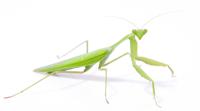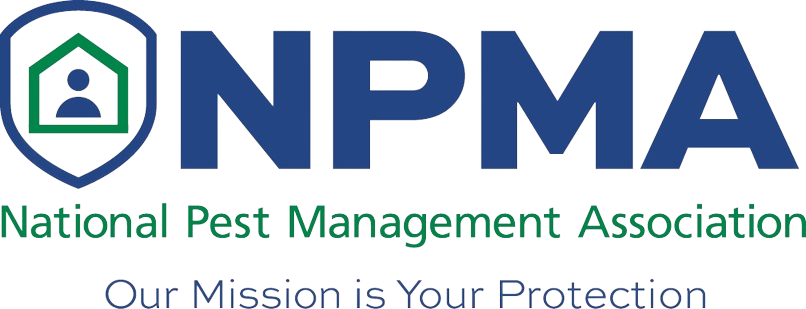Common Cockroaches in New York:
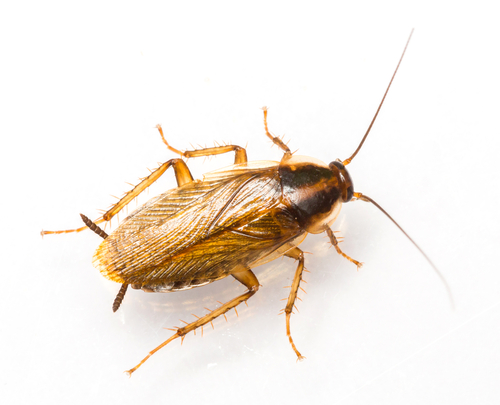 Cockroaches/Blattodea Cockroaches are insects of the order Blattodea, are considered one of the most successful groups of animals and they are among the most common of insects. They are the most successful ancient insect on the planet. Fossil evidence indicates that cockroaches have been on earth approximately 320 million years. Cockroaches are “living fossils”. This means that their basic shape and appearance has not changed for millions of years. Fossil remains of cockroaches have been dated before the appearance of the Dinosaurs and appear virtually identical to cockroaches we find today. Cockroaches will eat anything and can survive absolutely anywhere other than the Polar Regions and above 2,000 meters in elevation. Some can live without water, can fly, are the fastest insect and can survive high levels of radiation. About 4,600 species of cockroaches exist worldwide, 69 species found in the United States. In the New York State, only four species are common pests in structures. These are the German, Brown-banded, Oriental, and American cockroaches.
Cockroaches/Blattodea Cockroaches are insects of the order Blattodea, are considered one of the most successful groups of animals and they are among the most common of insects. They are the most successful ancient insect on the planet. Fossil evidence indicates that cockroaches have been on earth approximately 320 million years. Cockroaches are “living fossils”. This means that their basic shape and appearance has not changed for millions of years. Fossil remains of cockroaches have been dated before the appearance of the Dinosaurs and appear virtually identical to cockroaches we find today. Cockroaches will eat anything and can survive absolutely anywhere other than the Polar Regions and above 2,000 meters in elevation. Some can live without water, can fly, are the fastest insect and can survive high levels of radiation. About 4,600 species of cockroaches exist worldwide, 69 species found in the United States. In the New York State, only four species are common pests in structures. These are the German, Brown-banded, Oriental, and American cockroaches.
Common Blood Feeders in New York:
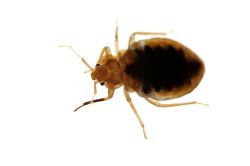 Bed bugs are parasitic insects of the cimicid family that feed exclusively on blood. The common bed bugs are the best known as they prefer to feed on human blood. The name "bed bug" derives from the preferred habitat of warm houses and especially near or inside beds and bedding or other areas around the house. Bed bugs are mainly active at night, but are not exclusively nocturnal. They usually feed on their hosts without being noticed. A number of adverse health effects may result from bed bug bites, including skin rashes, psychological effects, and allergic symptoms. Bed bugs are not known to transmit any pathogens as disease vectors. Certain signs and symptoms suggest the presence of bed bugs and finding the adult insects confirms the diagnosis. Bed bugs have been known as human parasites for thousands of years. They are potential to contaminate food with bacteria and other disease-producing organisms.
Bed bugs are parasitic insects of the cimicid family that feed exclusively on blood. The common bed bugs are the best known as they prefer to feed on human blood. The name "bed bug" derives from the preferred habitat of warm houses and especially near or inside beds and bedding or other areas around the house. Bed bugs are mainly active at night, but are not exclusively nocturnal. They usually feed on their hosts without being noticed. A number of adverse health effects may result from bed bug bites, including skin rashes, psychological effects, and allergic symptoms. Bed bugs are not known to transmit any pathogens as disease vectors. Certain signs and symptoms suggest the presence of bed bugs and finding the adult insects confirms the diagnosis. Bed bugs have been known as human parasites for thousands of years. They are potential to contaminate food with bacteria and other disease-producing organisms.
Common Rodents in New York:
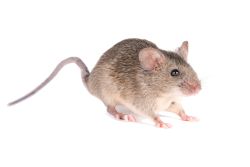 Mice and rats are rodents, often considered pests, many of which are native wild species that lived in this region long before home and farms existed to infest. Today, many of them, including non-native species, have adapted to life alongside humans. Their presence does not necessarily equal infestation or squalor conditions, rather that food, water, and nesting sites are adequate. Rodents have the typical large, broad, and yellow incisors, adapted for constant gnawing. These teeth continuously grow, replacing what is worn away by the gnawing of wood, plastic, and even metal. The teeth are well adapted for grains and fruits, although some rodents supplement their diet with insects and worms. With long tails, large snouts, and large external ears, these small rodents are very adaptable and prolific and can be found pretty much everywhere around the world. In New York we have 3 rat and 5 mouse species, with one invasive (but established) rat, and one native species presumed to be eliminated from the state. Rodents living close to people and in their structures are called commensal rodents. Rodents will eat anything that humans eat and they need to gnaw. It's a common part of their behavior. Rat teeth continually grow, at a rate of about five inches per year. In order to keep the length of the teeth in check, the rats chew on things to wear the teeth down, their constant gnawing behavior causes structural damage and when electrical wires are the target of their gnawing, they can start fires and damage sensitive electronic items. Both rats and mice carry diseases that are transmittable to humans. These include salmonella food poisoning, Leptospirosis, LCM, Hanta Virus and other diseases that can make people sick. Their droppings, urine and hair contaminate the environment and cause sensitive people to experience allergic reactions from these biological materials. Mice and rats contaminate stored food items with their fecal material, urine and hair.
Mice and rats are rodents, often considered pests, many of which are native wild species that lived in this region long before home and farms existed to infest. Today, many of them, including non-native species, have adapted to life alongside humans. Their presence does not necessarily equal infestation or squalor conditions, rather that food, water, and nesting sites are adequate. Rodents have the typical large, broad, and yellow incisors, adapted for constant gnawing. These teeth continuously grow, replacing what is worn away by the gnawing of wood, plastic, and even metal. The teeth are well adapted for grains and fruits, although some rodents supplement their diet with insects and worms. With long tails, large snouts, and large external ears, these small rodents are very adaptable and prolific and can be found pretty much everywhere around the world. In New York we have 3 rat and 5 mouse species, with one invasive (but established) rat, and one native species presumed to be eliminated from the state. Rodents living close to people and in their structures are called commensal rodents. Rodents will eat anything that humans eat and they need to gnaw. It's a common part of their behavior. Rat teeth continually grow, at a rate of about five inches per year. In order to keep the length of the teeth in check, the rats chew on things to wear the teeth down, their constant gnawing behavior causes structural damage and when electrical wires are the target of their gnawing, they can start fires and damage sensitive electronic items. Both rats and mice carry diseases that are transmittable to humans. These include salmonella food poisoning, Leptospirosis, LCM, Hanta Virus and other diseases that can make people sick. Their droppings, urine and hair contaminate the environment and cause sensitive people to experience allergic reactions from these biological materials. Mice and rats contaminate stored food items with their fecal material, urine and hair.
Common Wood Destroying Insects in New York:
 Termites are social insects belonging to the order of Isoptera. The Termite colony has three primary castes: workers, soldiers and the reproductives the king and the queen. They can utilize wood cellulose and this is their basic difference from other insects. termites mostly feed on dead plant material and cellulose, in the form of wood, leaflitter and soil. Termites are among the most sucessfull groups of insectson earth and their colonies range in size from a couple of hundred individuals to enormous societies with several million individuals. In nature termites are valuable decomposers as they help convert dead wood and other cellulose materials into humus. There are three majors spieces of termites which occur in the United States: Subterranean Termite, Dry Wood Termite and Formosan Termite. They can travel up to 130 feet from their colony and once they discover food source, they leave a trail for other termites to follow. Termites work 24 hours per day, worker termites bring food to the colony throught tunnels without resting. Termites need moisture to survive and will die if they expose themshelves into sunlight or open air. The tunnels they create protect them. High moisture areas like basements are very attractive to termites and can serve as starting points of an infestation in a structure. Termites cause more destruction to wood products and wooden parts of structures than any other insect. Subterranean termites cause about 95% of other termite related damage in the United States. In New York State Subterranean Termites are the most common.
Termites are social insects belonging to the order of Isoptera. The Termite colony has three primary castes: workers, soldiers and the reproductives the king and the queen. They can utilize wood cellulose and this is their basic difference from other insects. termites mostly feed on dead plant material and cellulose, in the form of wood, leaflitter and soil. Termites are among the most sucessfull groups of insectson earth and their colonies range in size from a couple of hundred individuals to enormous societies with several million individuals. In nature termites are valuable decomposers as they help convert dead wood and other cellulose materials into humus. There are three majors spieces of termites which occur in the United States: Subterranean Termite, Dry Wood Termite and Formosan Termite. They can travel up to 130 feet from their colony and once they discover food source, they leave a trail for other termites to follow. Termites work 24 hours per day, worker termites bring food to the colony throught tunnels without resting. Termites need moisture to survive and will die if they expose themshelves into sunlight or open air. The tunnels they create protect them. High moisture areas like basements are very attractive to termites and can serve as starting points of an infestation in a structure. Termites cause more destruction to wood products and wooden parts of structures than any other insect. Subterranean termites cause about 95% of other termite related damage in the United States. In New York State Subterranean Termites are the most common.
Common Ants in New York:
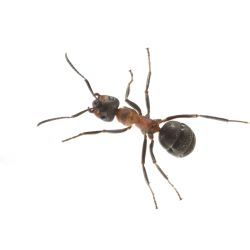 Enthusiastically social insects, ants typically live in structured nest communities that may be located underground, in ground-level mounds, or in trees. Ant communities are headed by a queen or queens, whose function in life is to lay thousands of eggs that will ensure the survival of the colony. Workers (the ants typically seen by humans) are wingless females that never reproduce, but instead forage for food, care for the queen's offspring, work on the nest, protect the community, and perform many other duties. Male ants often have only one role, mating with the queen. After they have performed this function, they may die. Ants communicate and cooperate by using chemicals that can alert others to danger or lead them to a promising food source. They typically eat nectar, seeds, fungus, or insects. However, some species have diets that are more unusual. Ants may prey on reptiles, birds, or even small mammals.
Enthusiastically social insects, ants typically live in structured nest communities that may be located underground, in ground-level mounds, or in trees. Ant communities are headed by a queen or queens, whose function in life is to lay thousands of eggs that will ensure the survival of the colony. Workers (the ants typically seen by humans) are wingless females that never reproduce, but instead forage for food, care for the queen's offspring, work on the nest, protect the community, and perform many other duties. Male ants often have only one role, mating with the queen. After they have performed this function, they may die. Ants communicate and cooperate by using chemicals that can alert others to danger or lead them to a promising food source. They typically eat nectar, seeds, fungus, or insects. However, some species have diets that are more unusual. Ants may prey on reptiles, birds, or even small mammals.
- Carpenter Ant
- Pavement Ant
- Odorous House Ant
- Crazy Ant
- Field Ant
- Big Headed Ant
- Little Black Ant
- Thief Ant
- Acrobat Ant
- Honey Pot Ant
Common Flies in New York:
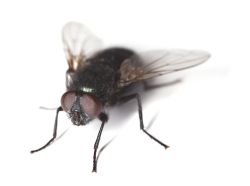 Flies can regularly be found in homes and businesses across the USA. Some species are more common than others and are attracted to different environments suited to their natural habits and lifecycle. Flies are a common invader in homes and commercial accounts. But they are more than a nuisance. Flies land and feed on filth one moment and food and food preparation areas the next. This behavior lends itself to serious contamination of areas and flies are known to carry over 100 different kinds of disease-causing germs such as typhoid, cholera, Salmonella, bacillary dysentery, tuberculosis, anthrax, ophthalmia, and parasitic worms. Knowing about the size, habits, seasonality and lifecycle of different fly species, can help to identify the most effective prevention and fly control methods .Flies and other pests can contaminate food and food preparation areas and can even spread diseases to your customers and staff.
Flies can regularly be found in homes and businesses across the USA. Some species are more common than others and are attracted to different environments suited to their natural habits and lifecycle. Flies are a common invader in homes and commercial accounts. But they are more than a nuisance. Flies land and feed on filth one moment and food and food preparation areas the next. This behavior lends itself to serious contamination of areas and flies are known to carry over 100 different kinds of disease-causing germs such as typhoid, cholera, Salmonella, bacillary dysentery, tuberculosis, anthrax, ophthalmia, and parasitic worms. Knowing about the size, habits, seasonality and lifecycle of different fly species, can help to identify the most effective prevention and fly control methods .Flies and other pests can contaminate food and food preparation areas and can even spread diseases to your customers and staff.
Common Fruit Flies in New York:
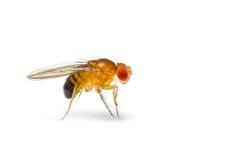 Fruit flies are a common problem for many homeowners or food establishments and are often seen swarming around kitchen fruit bowls and near garbage storage areas. As the name implies, fruit flies are attracted to fruits, as well as vegetables, sitting out on store shelves, in bowls in kitchens, and ripening in the garden. They also breed in drains, garbage disposals, trash containers, empty beer and soda bottles or cans, and soppy mops and buckets. Fruit flies only need fermenting fruit or a moist film of organic material to breed and thrive. Fruit flies exhibit the typical four-stage insect reproductive of egg-larvae-pupae-adult. The larvae begin feeding on decaying fruit immediately upon hatching. It takes about one to two weeks to complete the entire metamorphosis. What makes fruit flies so difficult to control is that one female fruit fly can lay as many as 500 eggs in her short lifespan.
Fruit flies are a common problem for many homeowners or food establishments and are often seen swarming around kitchen fruit bowls and near garbage storage areas. As the name implies, fruit flies are attracted to fruits, as well as vegetables, sitting out on store shelves, in bowls in kitchens, and ripening in the garden. They also breed in drains, garbage disposals, trash containers, empty beer and soda bottles or cans, and soppy mops and buckets. Fruit flies only need fermenting fruit or a moist film of organic material to breed and thrive. Fruit flies exhibit the typical four-stage insect reproductive of egg-larvae-pupae-adult. The larvae begin feeding on decaying fruit immediately upon hatching. It takes about one to two weeks to complete the entire metamorphosis. What makes fruit flies so difficult to control is that one female fruit fly can lay as many as 500 eggs in her short lifespan.
Common Mosquitos in New York:
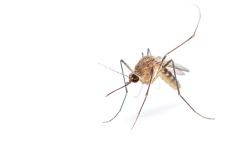 Mosquitoes are flying, biting insects that develop in water during their immature stages. Some of the many species found in New York are considered pests and can transmit diseases to humans and some animals. Mosquitoes are small flying insects that feed on human and animal blood or plant juices. Three are the most common species of mosquitoes in New York State. Only female mosquitoes bite to get a blood meal for their growing eggs. Mosquitoes usually become infected from feeding on infected birds. Mosquitoes lay their eggs in moist areas, such as standing water. The eggs become larvae that remain in the water until they mature into adults and fly off. Weeds, tall grass and shrubbery provide an outdoor home for adult mosquitoes. They also can enter houses, apartments and buildings through unscreened windows and doors. Many mosquitoes will breed in any container that holds water, such as flowerpots, wading pools or discarded tires. Some mosquitoes are active between dusk and dawn, when the air is calm. However, others will feed at any time of day. Mosquitoes prefer a warm, moist environment. They are active from early summer until late fall in New York State.
Mosquitoes are flying, biting insects that develop in water during their immature stages. Some of the many species found in New York are considered pests and can transmit diseases to humans and some animals. Mosquitoes are small flying insects that feed on human and animal blood or plant juices. Three are the most common species of mosquitoes in New York State. Only female mosquitoes bite to get a blood meal for their growing eggs. Mosquitoes usually become infected from feeding on infected birds. Mosquitoes lay their eggs in moist areas, such as standing water. The eggs become larvae that remain in the water until they mature into adults and fly off. Weeds, tall grass and shrubbery provide an outdoor home for adult mosquitoes. They also can enter houses, apartments and buildings through unscreened windows and doors. Many mosquitoes will breed in any container that holds water, such as flowerpots, wading pools or discarded tires. Some mosquitoes are active between dusk and dawn, when the air is calm. However, others will feed at any time of day. Mosquitoes prefer a warm, moist environment. They are active from early summer until late fall in New York State.
- House Mosquitoes/Culex
- Yellow Fever Mosquitoes (Aedes Mosquito)
- Common Malaria Mosquito/Anopheles Mosquito
Common Wasps in New York:
Common Spiders in New York:
Common Crawling Pests in New York:
Common Stored Product Pests in New York:
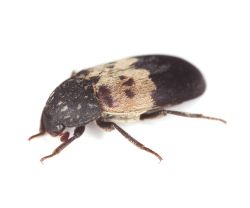 Pests of stored products can refer to any organism that infests and damages stored food, books and documents, fabrics, leather, carpets, and any other dried or preserved item that is not used shortly after it is delivered to a location, or moved regularly. Stored product pests are responsible for the loss of millions of dollars every year in contaminated products, as well as destruction of important documents and heritage artifacts in homes, offices, restaurants, food processing establishments and other important properties. Many of these pests are brought indoors in items that were infested when purchased. Others originate indoors when susceptible items are stored under poor storage conditions, or when stray individual pests gain access to them. Storage pests often go unnoticed because they infest items that are not regularly used and they may be very small in size. Infestations are noticed when the pests emerge from storage, to disperse or sometimes as a result of crowding or after having exhausted a particular food source, and search for new sources of food and harborage. Unexplained occurrences of minute moths and beetles flying in large numbers near stored items, or crawling over countertops, walls and ceilings, powdery residues below and surrounding stored items, and stale odors in pantries and closets can all indicate a possible storage pest infestation. Infestations in stored whole grains or beans can also be detected when these are soaked in water, and hollowed out seeds rise to the surface, along with the adult stages of the pests, and other debris. Other telltale signs are clumping or webbing of particles. It is important to recognize these pests and locate the sources of infestation as soon as possible, to prevent their establishment and spread. This section will cover insects and mites commonly encountered in storage and these can be broadly grouped into stored food (or pantry products), and stored fabric (or closet) pests. However, many of these pests are not restricted to either group and will infest food, fabric, as well as many other similar items of plant or animal origin. Pests of stored food/pantry pests are grouped into insects (beetles, moths) and non-insects (mites). However, large infestations can significantly alter the appearance, taste, flavor and quality of food, as well as create favorable conditions for growth of secondary fungal and bacterial pathogens. Allergic reactions can be produced in sensitive people. Certain general pests such as ants are often attracted to food stored in pantries and may be toxic if consumed in large numbers.
Pests of stored products can refer to any organism that infests and damages stored food, books and documents, fabrics, leather, carpets, and any other dried or preserved item that is not used shortly after it is delivered to a location, or moved regularly. Stored product pests are responsible for the loss of millions of dollars every year in contaminated products, as well as destruction of important documents and heritage artifacts in homes, offices, restaurants, food processing establishments and other important properties. Many of these pests are brought indoors in items that were infested when purchased. Others originate indoors when susceptible items are stored under poor storage conditions, or when stray individual pests gain access to them. Storage pests often go unnoticed because they infest items that are not regularly used and they may be very small in size. Infestations are noticed when the pests emerge from storage, to disperse or sometimes as a result of crowding or after having exhausted a particular food source, and search for new sources of food and harborage. Unexplained occurrences of minute moths and beetles flying in large numbers near stored items, or crawling over countertops, walls and ceilings, powdery residues below and surrounding stored items, and stale odors in pantries and closets can all indicate a possible storage pest infestation. Infestations in stored whole grains or beans can also be detected when these are soaked in water, and hollowed out seeds rise to the surface, along with the adult stages of the pests, and other debris. Other telltale signs are clumping or webbing of particles. It is important to recognize these pests and locate the sources of infestation as soon as possible, to prevent their establishment and spread. This section will cover insects and mites commonly encountered in storage and these can be broadly grouped into stored food (or pantry products), and stored fabric (or closet) pests. However, many of these pests are not restricted to either group and will infest food, fabric, as well as many other similar items of plant or animal origin. Pests of stored food/pantry pests are grouped into insects (beetles, moths) and non-insects (mites). However, large infestations can significantly alter the appearance, taste, flavor and quality of food, as well as create favorable conditions for growth of secondary fungal and bacterial pathogens. Allergic reactions can be produced in sensitive people. Certain general pests such as ants are often attracted to food stored in pantries and may be toxic if consumed in large numbers.
MOTHS:
BEETLES:
- Rust-Red Flour or Flour Beetle
- Cigarette Beetle
- Drugstore Beetle
- Flat Grain Beetle
- Fur Beetle or Carpet Beetle
- Golden Spider Beetle
- Lesser Grain Beetle
- Larder Beetle
- Lesser Mealworm or Litter Beetle
- Merchant Grain Beetle
- Rove Beetle
- Saw Toothed Grain Beetle
- Shiny Spider Beetle
- Warehouse Beetle
WEEVILS:
MITES:

